Text
Week 10: Digital Citizenship and Conflict: Social Media Governance
Week 10! Finally! This semester has felt like its gone on forever. This will be my last ever Tumblr post for the unit mda20009! But back to the point of this week, this week was a bit of a sad and hard topic to hear being talked about for many reasons but it was Digital Citizenship and Conflict: Social Media Governance.
This topic covers the not so good side of digital communities; where they can prove to be not so inclusive and problematic.
Online harassment is something that is unfortunately seen extremely often within digital communities.
Online harassment is an umbrella term for many different actions and has many definitions to the term. A definition I thought was quite straightforward and easily comprehendible.
"Umbrella term that can include: Being called offensive names, being embarrassed online, being physically threatened online, being sexually harassed online, being harassed over a long time, being hurt online by a romantic partner, being impersonated, spreading damaging rumors online, encouraging others to harass people online, and attempting to hurt the victim in person after online harassment" (Lenhart, et al in Marwick & Robyn Caplan 2018).
From the research used for this week's lecture it was found through Plan Internationals survey, where they surveyed 14,000 girls across 31 countries that more than half of those girls had been targeted with abusive and insulting language.
Haslop et al found that people who identify as female and transgender are more likely to be targeted by online harassment (2021). Furthermore, In 2021 a study by the Economist Intelligence Unit found more than a third of women worldwide have experienced abuse online, rising to almost half for younger women
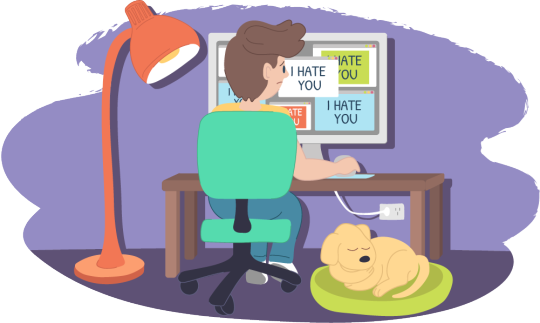
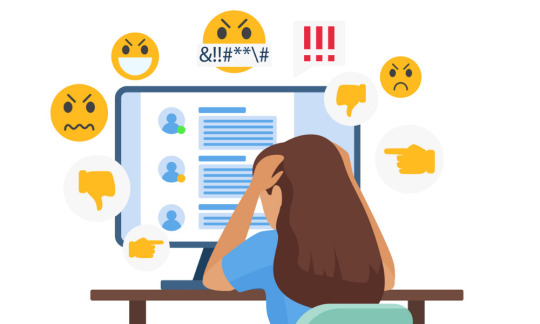
In hearing these facts and statistics it has most definitely made me feel a bit upset and disappointed, as this is reality for people in modern day society. Where you would think that online users would be past this sort of behavior.
The lecture this week also addressed what can be done to try and stop online bullying and harassment. There are not only legal remedies but also humor can raise awareness, advocacy and advice from the e-commissioner as well as platform pressure and corporate social responsibility.
This weeks required reading focused primarily on the concept of 'snowflake generation', "a term used to mock their perceived intolerance and over-sensitivity" (Haslop, O’Rourke & Southern, 2021, p. 1).
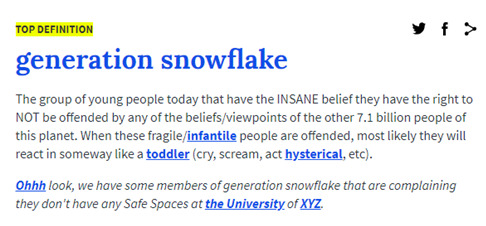
This term was also brought up in this week's presentations and it intrigued me quite a bit. I was already aware of the connotations of the term snowflake but I was interested to find out what it meant in relation to this generation. Where essentially it refers to a ‘new breed of hyper-sensitive censorious youth’ (Fox, 2016b: np), a derogatory label for millennials, used by those who feel they're overly socially conscious without taking real action (new idea).
Well that’s it from me for mda20009, I hope you enjoyed these posts! Thank you for reading : )
References for this week
Douglas, E. (2022) What are HR’s responsibilities in online harassment?, HRD Canada. Available at: https://www.hcamag.com/ca/specialization/employment-law/what-are-hrs-responsibilities-in-online-harassment/406496 (Accessed: 08 May 2023).
Haslop, C., O’Rourke, F., & Southern, R. (2021). #NoSnowflakes: The toleration of harassment and an emergent gender-related digital divide, in a UK student online culture. Convergence, 27(5), 1418–1438.
If you’re being harassed online, you don’t have to deal with it alone (2019) Kids Helpline. Available at: https://kidshelpline.com.au/teens/issues/online-harassment (Accessed: 08 May 2023).
Milne, E 2023, ‘MDA20009 Week 10 Digital Citizenship and Social Media Conflict 2023.pptx’, MDA20009 Digital Communities, Learning materials via Canvas, Swinburne University of Technology, 8 May, viewed 8th May 2023.
Published by abbieapyne View all posts by abbieapyne et al. (2019) Generation snowflake, Language and the Media. Available at: https://abbieapyne.wordpress.com/2019/03/21/generation-snowflake/ (Accessed: 08 May 2023).
0 notes
Text
Week 9, Gaming Communities, Social Gaming and Live Streaming
I'm definitely feeling burnt out from uni coming into week 9 but semester one is nearly done so that gives me hope!
Week 9 was all about Gaming Communities, Social Gaming and Live Streaming. A topic I'm not too fond of anymore but when I was growing up with my two older brothers I was definitely extremely familiar with gaming and the communities in which gaming can form.
It was honestly really nice to listen to this week's presentations as it kind of reminded me of my childhood and provided a sense of nostalgia too.
Firstly, to my interpretation from all of the material provided video games can be defined as pieces of media (interactive media) designed by individuals or groups for people to play.
Like many other things in our society, video games have the ability form communities when likeminded people come together. However not everyone who plays a game actively participates in a gaming community. And that’s okay too!
In addition to the gaming community, a huge part of games and gaming is the gaming industry. Which I never had much thought about it prior, but when you think about it more than say 5 seconds you realise how much the industry is heavily reliant on the gaming users and gamers.
But the industry is heavily reliant on player feedback – not just tied down to own specific game but can be broader. It is also tied into the idea that general feedback (negative or positive)
Industry is heavily reliant on player feedback – can be broader or just one game based has a huge impact on the industry and can therefore create changes.
Taking a shift to the required reading by Brendan Keogh "Independent Videogames: Cultures, Networks, Techniques and Politics, Routledge, these are the four key ideas and concepts I found interesting;
"the Australian Penny Arcade Expo (PAX Expo), the largest consumer-facing geek culture expo in the Southern Hemisphere" (Keogh, 2021 p. 209)
Different communities are often referred to as a 'scene', however these 'scenes' also include the academics researching them.
Throughout the first half of the 2010s the Melbourne as well as Australian gaming industry changed by necessity "to an almost exclusively ‘indie’ industry following the closure of nearly every large studio in the country" (Keogh, 2021 p. 215). Melbourne had particularly successfully nurtured this transition to independence. This was a result of a "wide range of cultural and political advantages." (Keogh, 2021 p. 215)
"While ‘indie’ and ‘independent’ are identity markers used by a wide range of videogame makers around the world, the participant remarks in this chapter serve as an important reminder that these labels do not define a singular nor a homogenous way of being a videogame maker." (Keogh, 2021 p. 220.)


I also was really intrigued by the idea that "every year in November, the Australian city of Melbourne, capital of the state of Victoria, hosts Melbourne International Games Week (MIGW)" (Keogh, 2021 p. 209). I wasn't necessarily surprised but I guess you could say I didn’t expect it that this event would be "curated by the Victorian government body Creative Victoria" (Keogh, 2021 p. 209). I initially would have thought it would be an independent group or body that isn't related to the government.

References for this week
Hardwick, T 2023, ‘Part 1 MDA2009 week 9 lecture.mp4’, MDA20009 Digital Communities, Learning materials via Canvas, Swinburne University of Technology, 1 May, viewed 1st May 2023.
Keogh, B 2021, 'The Melbourne indie game scenes: value regimes in localized game development' (Chapter 13), Download 'The Melbourne indie game scenes: value regimes in localized game development' (Chapter 13),in P Ruffino (ed), Independent Videogames: Cultures, Networks, Techniques and Politics, Routledge, pp.209-222.
Log into Facebook (no date) Facebook. Available at: https://www.facebook.com/PAXAUS/ (Accessed: 01 May 2023).
Maier, A. (2023) Calling all video game fanatics: Pax festival is returning to Melbourne, Time Out Melbourne. Available at: https://www.timeout.com/melbourne/things-to-do/pax (Accessed: 01 May 2023).
Melbourne International Games Week 2022: Sat 1 – sun 9 Oct 2022 (no date) ACMI. Available at: https://www.acmi.net.au/whats-on/migw-2022/ (Accessed: 01 May 2023).
0 notes
Text
Week 8, Digital Citizenship and Software literacy: Instagram Filters
I feel as though this week's topic of Instagram and Snapchat filters is definitely one of the mor relatable topics that we can apply to our own everyday lives. the use of filters has astronomically increased and has become more widespread ever since Snapchat introduced their 'lenses' and filters in 2015.
This weeks required reading by Jessica Barker "Making-up on mobile: The pretty filters and ugly implications of snapchat" explores the problematic and detrimental effects of social media filters and lenses on apps such as Snapchat and Instagram. "By thinning out the face, slimming and shortening the nose, enlarging the eyes, plumping the lips and smoothing out the skin, Snapchat seizes a user’s features and morphs them into compliance with a stereotypical form of beauty" (Barker, 2020, p. 209). Creating these "exclusionary ideal; people of colour find theircomplexions unnaturally and undesirably lightened by Snapchat’s filters" (Barker, 2020, p. 209).
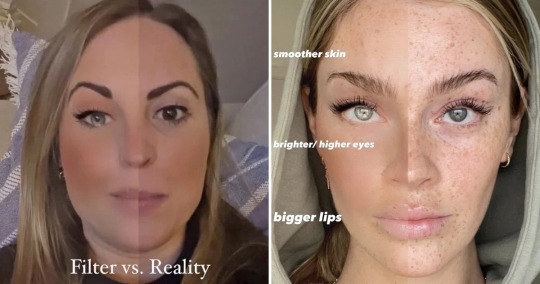
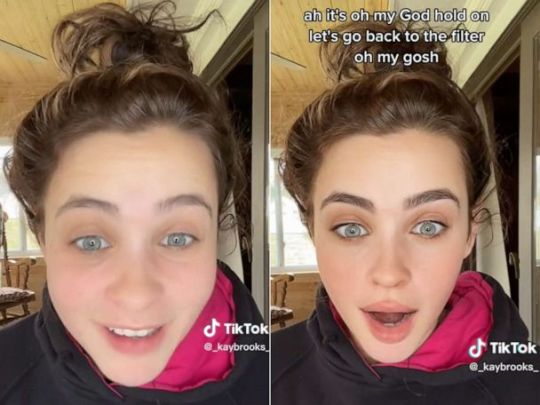
I definitely did find myself relating to some of the negative impacts of filters. Those being not knowing what you truly look like and feeling as though my natural face is not considered to be 'pretty' or 'beautiful' as it doesn’t fit into society's standards and stereotypes.
I also found a point from one of the additional resources quite interesting. It was from Rettbergs "Filtered Reality", where he talks about the concept of adapting our selfies to machine vision.
Where "filters show us images that look different than the world we are used to seeing" and that filters "fascinates us is that it gives the image that strangeness that defamiliarises our lives. The filter makes it clear that the image is not entirely ours." (Rettberg, 2014, p. 25-26)
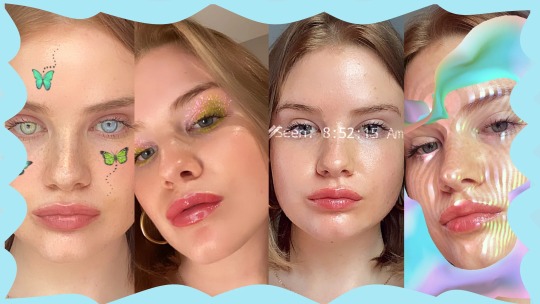
Whereby people take social media filters one step further and go under the knife and get surgery in order to look as similar to their 'filtered selves' as possible. If I'm honest I'm not too sure how to feel about this concept. Obviously in an ideal world everyone is happy and confident within themselves, however sometimes surgery allows for people to feel confident within themselves.
As there was a "transition from authenticity to algorithmic beauty" (Barker, 2020, p. 211) social media users were more so than ever focused on fulfilling these standards through either filters or cosmetic and plastic surgery.
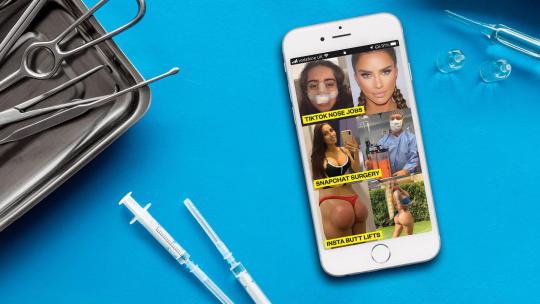
In more recent times, an amazing trend has emerged as a result of filters and their negative impacts. The trend is called filter vs reality, a filter which shows half of your face in its natural unenhanced state and the other half with a filter. In participating in this trend it allows viewers and creators to realise that filters heavily later everyone's faces and that no one looks like how they do on social media.
I'm still unsure on how I feel about this week's topic as I feel as though it has definitely impacted me and the way in which I view myself in comparison to models and social media influencers. These filters and presence of surgery to fulfil certain beauty standards is still very much engrained into our society too. But I'll leave it at that for today.
References for this week
Barker, Jessica. (2020). 'Making-up on mobile: The pretty filters and ugly implications of Snapchat'. Download 'Making-up on mobile: The pretty filters and ugly implications of Snapchat'.Fashion, Style & Popular Culture. 7. 207-221.
Fortson, D. (2022) The Truth About Social Media's cosmetic surgery boom, The Times & The Sunday Times: breaking news & today's latest headlines. The Sunday Times. Available at: https://www.thetimes.co.uk/article/cosmetic-surgery-social-media-dangers-chqnj8r06 (Accessed: April 24, 2023).
Miller, L 2023, Slides Filters.pdf, MDA20009 Digital Communities, Learning materials via Canvas, Swinburne University of Technology, 24 April, viewed 24th April 2023.
Mustafa, T. (2021) An 'Instagram vs reality' filter is showing how toxic photo editing can be, Metro. Metro.co.uk. Available at: https://metro.co.uk/2021/04/30/an-instagram-vs-reality-tool-is-showing-how-toxic-filters-can-be-14498265/ (Accessed: April 24, 2023).
Pitcher, L. (2020) Instagram filters are changing the way we think about makeup, Teen Vogue. Available at: https://www.teenvogue.com/story/instagram-filters-makeup (Accessed: April 24, 2023).
Rettberg J.W. (2014) 'Filtered Reality'. Download 'Filtered Reality'.In: Seeing Ourselves Through Technology: How We Use Selfies, Blogs and Wearable Devices to See and Shape Ourselves. Palgrave Macmillan, London.
Rettberg J.W. (2017) 'Biometric Citizens: Adapting Our Selfies to Machine Vision'. I Download 'Biometric Citizens: Adapting Our Selfies to Machine Vision'. In: Kuntsman A. (eds) Selfie Citizenship. Palgrave Macmillan, Cham.
Team, G.M.A. (2023) Tiktok face filters rack up millions of views while stirring up controversy, Good Morning America. Good Morning America. Available at: https://www.goodmorningamerica.com/wellness/story/tiktok-face-filters-rack-millions-views-stirring-controversy-97443381 (Accessed: April 24, 2023).
0 notes
Text
Week 7, Digital Citizenship and Health Education: Body Modification on Visual Social Media
Okay so, all the other weeks with topics I thought I wouldn’t find interesting I found to be quite interesting however this week I definitely was not expecting to find interesting at all but it was quite the opposite. I found it super interesting and informative as I could apply it to my own life and my own examples.
Here are some of the points from this week's presentations and lectures that I felt were the most important;
Female and male aesthetic templates; the idea that social media creates these templates in which females and males have to abide by and should fit under. Those of which are of stereotypical nature; femininity and masculinity. Therefore creators change their content in order to fit into the aesthetic stereotype.
The concept of censorship. This refers to "the control or suppression of what can be accessed, published, or viewed on the Internet" (IGI Global) or on social media applications such as TikTok and Instagram. This idea has come to be quite toxic and problematic over the years.


Duffy and Meisner’s (2022) study that found marginalised groups in society experience algorithmic invisibility on social media. Whereby stigmatised groups e.g transgender content creators "practise self‐censorship to circumvent intervention that limits their reach" (Jonathan Mavroudis nd)
Due to this censorship issue on social media platforms it forces creators to use alternative words to speak on certain topics such as 'seggs' as a replacement for 'sex'. Therefore meaning for a lack of views being expressed and a lack of discussion on important topics.
Ultimately, as a result content creators content is not being shown to broad audiences and thus are losing their stream of income due to lack of views and engagement
The idea of pornification online, "for social media users, selfies are often the result of work understood as sexualised labour" (Drenten & Gurrieri, 2019).
"In digital contexts, It has been argued that women are presenting a highly sexualized version of self online" (Mavroudis, 2020; Herring, 2015; Carrotte, Prichard, & Lim, 2017; Kapidzic & Ringrose, 2011).


And then, from this week's reading by Brooke Erin Duffy and Colten Meisner was based upon the results from the interviews of 30 different social media creators. "Social media creators are, moreover, beholden to the vagaries of platforms’ “inscrutable” socio-technical systems, particularly the algorithms that enable (or – conversely – thwart) their visibility." (Duffy & Mesiner, 2022, p. 1)
Another concept I found cool from the reading was the idea of platform governance. The study had looked at the 30 different creators’ views of algorithmic platform governance, which Savolainen (2022) defines as “social ordering carried out by social media platforms through the employment of automated means, blending human and machinic agency” (p. 2).
References for this week
Duffy BE and Meisner, C 2022. “Platform governance at the margins: Social media creators’ experiences with algorithmic (in)visibility,” Media, Culture & Society.
Guest (2023) Tiktok Shadow Ban: What is it and how to avoid it?, EmbedSocial. Available at: https://embedsocial.com/blog/tiktok-shadow-ban/ (Accessed: April 17, 2023).
Kylie Jenner posts revealing Instagram pictures in leather corset (2020) News.com.au. Available at: https://www.news.com.au/entertainment/celebrity-life/celebrity-photos/kylie-jenner-posts-revealing-instagram-pictures-in-leather-corset/news-story/68dcefde0c80a42731b73cc8da1b354e (Accessed: April 17, 2023).
Mavroudis, J 2023, ‘Digital Communities Week Seven 2023 slides.pptx’, MDA20009 Digital Communities, Learning materials via Canvas, Swinburne University of Technology, 17 April, viewed 17th April 2023.
Singh, E. (2022) Why are TikTok posts being 'shadowbanned' and placed 'under review'?, Sports News. Sportskeeda. Available at: https://www.sportskeeda.com/pop-culture/why-tiktok-posts-shadowbanned-placed-under-review (Accessed: April 17, 2023).
What is internet censorship (no date) IGI Global. Available at: https://www.igi-global.com/dictionary/internet-censorship-china/42010 (Accessed: April 17, 2023).
0 notes
Text
Week 6, Digital Citizenship Case Study: Social Media Influencers and the Slow Fashion Movement
This week was all about a Digital Citizenship Case Study: Social Media Influencers and the Slow Fashion Movement. I think that this was my favorite week so far as I am quite interested and passionate about fashion and slow fashion, hence why I chose it for my presentation in class.
So, what is slow fashion?
It is the complete stark opposite of fast fashion, whereby it is entirely about creating mindful, curated collections based upon quality finishes. Encompassing a sustainable and awareness approach to fashion that takes into account the processes and resources necessary to create clothing. Slow fashion endorses and promotes for supporting and buying high quality items that’ll last longer and appreciates the ethical treatment of people and the planet.
Essentially, slow fashion is comparable to sustainable and ethical fashion, all movements with similar goals and morals. Encouraging consumers to purchase higher quality garments which pose less environmental and ethical risk which will last longer in comparison to fast fashion brands products. Therefore not promoting overconsumption and encouraging conscious shopping.
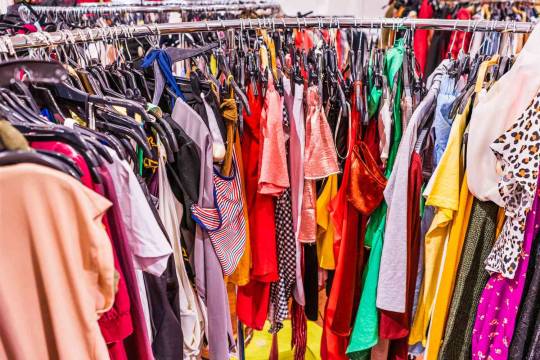

Digital Citizenship & Slow Fashion (I.e Influencers & Slow Fashion)
This weeks required reading by Mariana Domingos, Vera Teixeira Vale and Silvia Faria allows readers to "understand the dimensions associated with the behavior of the Slow Fashion consumer, their values, attitudes, and motivations, as well as to know in depth the literature related to Slow Fashion." (Domingos, Vale, Faria, 2022, p. 1). Using the data collected from 25 documents as a basis to support and define the concept of slow fashion. I found this concept really interesting, especially seeing what was the regularly occurring keywords and concepts.
The content analysis of the final 25 documents used in this study provides an overview
of the literature supporting the concept of “Slow Fashion”. The theories presented throughout
the papers were divided into seven groups, as they are associated with the same theoretical
environment. This presents the groups of theories.
The theory groups included were:
sustainability,
marketing,
culture,
fashion,
human behavior,
methods,
and business.
Now onto the influencer side of things for this week's lecture. We all know and either love or hate influencers and despite of our own personal views on them, influencers have immense power over their audiences.
So, if you didn’t already know (you must not have ANY social media or read and watch the news) an influencer can be defined as "Social Media Influencers (SMIs) are individuals who cultivate celebrity capital on social media platforms by ‘crafting an authentic “personal brand”’ (Hearn and Schoenhoff 2016, 194).
And in this week's context, we are talking about influencers whose platforms are about slow fashion and the negative impacts of fast fashion as well. It also leaned into the concept we have already spoken about prior; digital citizenship. Which both go hand in hand as social media is developing into a key character of digital citizens lives.
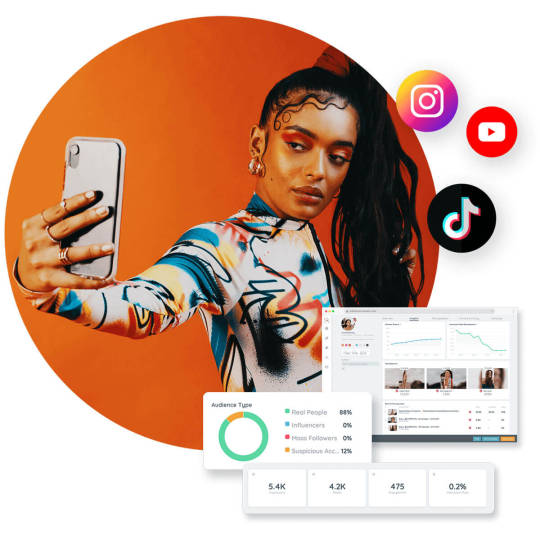

Ultimately, I really enjoyed this week (despite having to present) because I genuinely really enjoy this topic and it is something I am passionate about.
References for this week:
Antoniadou, K. (2023) 20 best sustainable fashion influencers in 2023, Sustainably Kind Living. Available at: https://sustainablykindliving.com/best-sustainable-fashion-influencer/ (Accessed: April 10, 2023).
DiLonardo, M.J. (2022) What is fast fashion-and why is it a problem?, Treehugger. Treehugger. Available at: https://www.treehugger.com/fast-fashion-environmental-ethical-issues-4869800 (Accessed: April 10, 2023).
Domingos, Mariana, Vera Teixeira Vale, and Silvia Faria. (2022). "Slow Fashion Consumer Behavior: A Literature Review" (Accessed: April 10, 2023).
Hearn, A & Schoenhoff, S 2015, ‘From Celebrity to Influencer: Tracing the Diffusion of Celebrity Value across the Data Stream’, A Companion to Celebrity, John Wiley & Sons, Inc, Hoboken, NJ, USA, pp. 194–212.
Home: Influencerimpact (no date) Home | influencerIMPACT. Available at: https://influencer-impact.com/ (Accessed: April 10, 2023).
Lee, JA, Sudarshan, S, Sussman, KL, Bright, LF & Eastin, MS 2022, ‘Why are consumers following social media influencers on Instagram? Exploration of consumers’ motives for following influencers and the role of materialism’, International journal of advertising, vol. 41, no. 1, Routledge, pp. 78–100.
Milne, E 2023, ‘MDA 20009 Week Six Digital Citizenship and Slow Fashion 2023.pptx’, MDA20009 Digital Communities, Learning materials via Canvas, Swinburne University of Technology, 10 April, viewed 10th April 2023.
Ourgoodbrands (2020) The real impact of the fast fashion industry on the world, Ourgoodbrands. Available at: https://ourgoodbrands.com/real-impact-fast-fashion-industry-world/ (Accessed: April 10, 2023).
Sustainable fashion influencers advocating for the cause (2022) IZEA. Available at: https://izea.com/resources/sustainable-fashion-influencers/ (Accessed: April 10, 2023).
What is slow fashion? (2022) Good On You. Available at: https://goodonyou.eco/what-is-slow-fashion/ (Accessed: April 26, 2023).
0 notes
Text
Week 5, What is Digital Citizenship? Hashtag Publics, Political Engagement and Activism
I didn’t think that I would find this week as interesting or as comprehendible as it was and I really enjoyed learning about Digital Citizenship, Hashtag Publics, Political Engagement and Activism it proved to be extremely interesting and dimensional.
Digital citizenship similarly to every other concept explored thus far has many definitions but here is the most comprehendible one I came across. Digital citizenship can be defined as the responsible use of technology and the internet as well as the ability to navigate the internet.
Another concept I found interesting was platformisation, this refers to the concept where social media network sites are transformed and changed into social media platforms.


The concept of digital citizenship refers to the responsible use of technology and the internet as well as the ability to navigate the internet.
Through the required reading of this week I learnt that there are three main frameworks to the concept of digital citizenship:
Uni dimensional: solely focusing on the technical skills required for using digital technologies. The discipline behind digital citizenships. For example, education, communication and journalism, and political science.
Multi-dimensional: perspective that recognises the complexity of digital citizenship through five different levels. Those being technical skills, local/global awareness, networking agency, critical perspective, and Internet political activism.
Critical perspective: perspective that examines the relationship between individuals, technology, and society and recognizes the potential for power imbalances, inequalities, and injustices that may arise in the digital world.
This week's reading also explored the concept of participatory democracy, where it is the ultimate goal of digital citizenship education. Defined by Dictionary.com as; "individual participation by citizens in political decisions and policies that affect their lives, especially directly rather than through elected representatives." (Dictionary.com, 2023).
Leaning into the power that social media holds to galvanize movements and political campaigns, regularly through hashtags. Thus allowing for large accessibility to see authors or peoples viewpoints. Examples of this is the #metoo movement, #BLM, #sayhername movement and the #shoutyourabortion movement to name a few recent ones. Utilising social media to display the power of personalised and participatory politics.
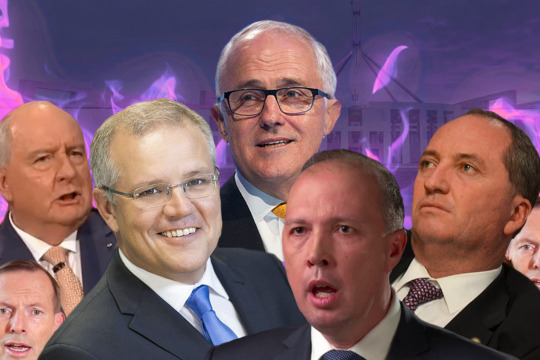
Another concept explored that I didn’t find as interesting is the idea of Intersectionality framework. "Refers to the idea that multiple identity attributes, such as gender, race, ethnicity, class, sexuality, and age, operate simultaneously across social determinants to construct multifaceted inequalities." (2021, p. 363).
Two other very brief points I noted this week were the importance of
Political and civil engagement
Key tool in political and electoral campaigns
References for this week:
Burnett, S. and Guhlin, M. (2021) Resources for building a Digital Citizenship Program, TechNotes Blog. Available at: https://blog.tcea.org/resources-building-digital-citizenship-program/ (Accessed: March 27, 2023).
Milne, E 2023, ‘MDA 20009 Digital Communities Week 5 2023.pptx’, MDA20009 Digital Communities, Learning materials via Canvas, Swinburne University of Technology, 27 March, viewed 27th March 2023.
Moonsun Choi & Dean Cristol (2021) Digital citizenship with intersectionality lens: Towards participatory democracy driven digital citizenship education, Theory Into Practice, 60:4, 361-370, DOI: 10.1080/00405841.2021.1987094
Participatory democracy definition & meaning (2023) Dictionary.com. Dictionary.com. Available at: https://www.dictionary.com/browse/participatory-democracy (Accessed: March 27, 2023).
Stott, R. (2018) Scott Morrison, Malcolm Turnbull & Peter Dutton: The dumbest #auspol moments of 2018, Junkee. Available at: https://junkee.com/auspol-2018-wrap-scott-morrison/187152 (Accessed: March 27, 2023).
The art of platformisation: How to build market leaders in the Digital age (2019) Palladium. Available at: https://palladiumdigital.co.uk/news-and-insights/the-art-of-platformisation-how-to-build-market-leaders-in-the-digital-age (Accessed: March 27, 2023).
Zook, C. (2022) What is Digital Citizenship & How Do You Teach It?, CTE Curriculum for Middle and High School Teachers. Available at: https://www.aeseducation.com/blog/what-is-digital-citizenship (Accessed: March 27, 2023).
0 notes
Text
Week 4, Digital Community and Fandom: Reality TV Case Study
Week 4! Reality TV! I can't say that personally I'm the biggest reality TV enthusiast but I do enjoy watching the clips of Love Island or MAFs that get uploaded to Tik Tok.
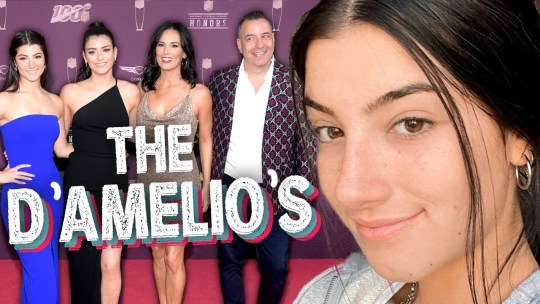
Clearly, this week's topic was Reality TV and despite how common reality TV shows and series are, people surveyed about their viewing behaviour consistently state that the genre of Reality TV is their least favourite. Even with consistently winning ratings. Where 61% of respondents in this same study say they wish that there was less Reality TV, as there is too much in our media.
I'd say that I have to agree with those who are being surveyed, if I had to pick something to watch on TV, a reality show or series would not be my first choice.
To provide some context, Reality TV has many varying definitions but here are three in which I thought were the most comprehendible. Reality TV can be defined by Oxford Dictionary as “A type of television programming which aims to show how ordinary people behave in everyday life, or in situations, often created by the program makers, which are intended to represent everyday life” (Collins English Dictionary).
Furthermore, reality TV has dominated television programming for the last two decades and can be found as far back in history as the 1950s.

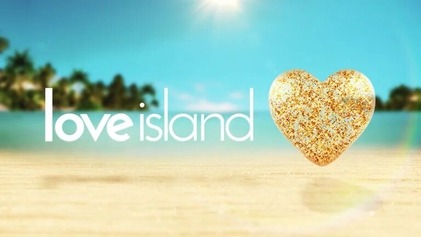
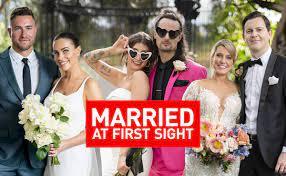
Being such a broad genre it covers many subgenres such as gamedocs, dating programs, makeover/lifestyle, docusoaps, talent contests, court programs, reality sitcoms, and celebrity based programs (Murray and Ouellette).
Firstly, reality is a genre that privileges ‘liveness’, especially in shows that are broadcast live and implement some form of voting. ‘Liveness’ helps the media emphasise its role as some- thing that can unite society. (Deller, 2019, pg. 155).
From this week's lecture I learnt quite a lot and found these key points very interesting;
Reality TV is a genre that is designed to elicit talk and shared opinions
The idea of 'Tweeting with the Telly': this refers to the idea that viewers are often encouraged to use the app 'Twitter' to form interactions over TV.
Through emphasising their liveness it presents the shows as a communal experience. Whereby Twitter plays a huge role in this, hyping up its liveness through hashtags on screen throughout the programming and on occasion verbally through a host to encourage the viewer to take part within the discussion.
Social Media multi platform engagement; allowing for diversification within the audiences and markets. Increasing the opportunities for reality stars across social media platforms (cameos, brand sponsorships, podcasts etc).
Reality TV creates digital publics for everyday political talk; performs valuable (yet often dismissed) social function .
For this week's required reading, I felt as if there was a lot to comprehend and take on board and felt a little bit overwhelmed but I found this one point quite eye opening as I could definitely apply it to my own experiences.
Whereby the genre of Reality TV lends itself extremely well to humour, through the form of gifs, puns, quips, memes and sarcastic commentary in the hopes to feel relatable to the audience. Creating a 'brand' for these tv shows and series. Playing a key role in their social media as it boosts engagement for their accounts and the communities created.
References for this week:
Deller, Ruth A, (2019) Extract: 'Chapter Six: Reality Television in an Age of Social Media' Download 'Chapter Six: Reality Television in an Age of Social Media'in Reality Television: The TV Phenomenon That Changed the World (Emerald Publishing).
Jenkins, C. (2023) Who leaves Tonight's MAFS Australia commitment ceremony?, Back to the Bay. Available at: https://www.backtothebay.net/news/2023/03/27/josh-and-caitlin-leave-married-at-first-sight-australia-in-2nd-commitment-ceremony/ (Accessed: March 20, 2023).
Love Island (2015 TV series) (2023) Wikipedia. Wikimedia Foundation. Available at: https://en.wikipedia.org/wiki/Love_Island_%282015_TV_series%29 (Accessed: March 20, 2023).
Milne, E 2023, ‘MDA 20009 Week Four Reality TV Case Study 2023 Slides.pptx’, MDA20009 Digital Communities, Learning materials via Canvas, Swinburne University of Technology, 20 March, viewed 20th March 2023.
Tik Tok star Charli D'Amelio is getting a REALITY SHOW!- Awesomeness TV (2020) Google search. Google. Available at: https://www.google.com/search?q=REALITY%2BTV%2BON%2BTIK%2BTOK&tbm=isch&ved=2ahUKEwjhx8-szoX-AhWaHbcAHX42C-MQ2-cCegQIABAA&oq=REALITY%2BTV%2BON%2BTIK%2BTOK&gs_lcp=CgNpbWcQAzoECCMQJzoFCAAQgAQ6CAgAEIAEELEDOgcIABCKBRBDOgQIABADOgYIABAIEB46BwgAEIAEEBhQkwdYhB9g6SFoAHAAeACAAZACiAGIJJIBBjAuNi4xNpgBAKABAaoBC2d3cy13aXotaW1nwAEB&sclient=img&ei=RYcmZKGRHZq73LUP_uysmA4&bih=660&biw=1440&rlz=1C5CHFA_enAU990AU990#imgrc=--WAfjeD9Zi4gM (Accessed: March 20, 2023).
What is reality television? (2022) FutureLearn. Available at: https://www.futurelearn.com/info/courses/pictures-of-youth-introduction-childrens-visual-culture/0/steps/43948#:~:text=%E2%80%9CA%20type%20of%20television%20programming,%E2%80%9D%20(Collins%20English%20Dictionary). (Accessed: March 20, 2023).
0 notes
Text
Week 3, Tumblr Case Study
The public sphere is a concept that was created by a German philosopher Habermas in the 1990s as a way to explain the evolution of social and technological within society. It acts as a place where individuals come together as a public to discuss societal matters and issues, forming the basis of political discussion and therefore influencing political action.
Argued by Bruns and Highfield the traditional public sphere is now composed of micro-publics or communities. ‘None of which are mutually exclusive but which co-exist, intersecting and overlapping in multiple forms across diverse media platforms.’ (Bruns & Highfield)
An example of micro-publics or digital communities include blogging, particularly on Tumblr.
Now, I'm definitely a Tumblr 'novice' as I've never truly used the platform or even researched it. I only know that it is definitely not as popular as it used to be back in 2012 to 2014. So I looked into it a little bit.
Tumblr is a social media platform and microblogging website founded by David Karp in 2007. The website is currently owned by Automattic, an American software company. Proving to be quite different to the typical social media platforms.
Tumblr allows for;
Anonymity; the platform is not tied down to having 'real name internet'
Hashtagging; tumblr was actually the first social media platform to utilise hashtags to create a community
Relatively public; users on the platform do not need to follow other users in order to see their content being posted
Less surveillance than other social media sites; the time of when a user posts is not of great importance and is it not prioritised
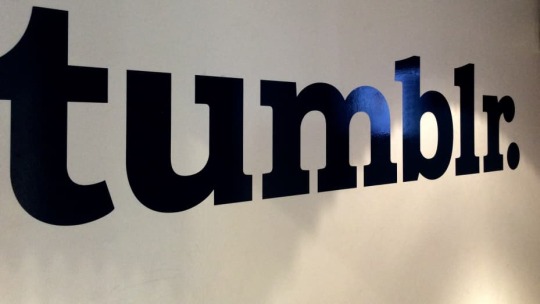
I have always been intrigued as to why there was a halt in active users on Tumblr, therefore I undertook my own research to dig deeper as to why it is not so popularly used anymore. So, what happened to Tumblr?
I found a few reasons as to why Tumblr ‘died out’ in a sense, the first being that it was a result of changing the leadership of the platform. The new leadership did not know much about the preexisting culture of the platform. In addition, the platform's adherence to anonymity and unattractiveness to advertisers, all leading to the decline of the app.
Struggling to redefine themselves, other competing apps such as Instagram, Facebook and Twitter were constantly further developing their platforms with new front-end features that attracted large amounts of users.
Whereby front-end features are essentially an amalgamation of two elements; “the graphic design (the look) and the user interface (the feel).” (AirFocus, pg1. 2022)
In addition to these reasons, Tumblr also began to fail due to the fact it had banned NSFW (not safe for work) content, due to its inability to sell ads, lacking product stickiness, as well as its differences in culture between the platform and Yahoo.
In addition to my research, I found the required reading very interesting. Where the Tumblr hashtag '#bodypositive', is used as a representation of a space for empowering feminists. Through the reading, they explore the research conducted with this hashtag. "(1) how diverse women in selfies posted with the hashtag #bodypositive are, (2) in which context pictures are embedded, and (3) which user reactions they receive within the community.' (Reif, Miller & Taddicken, 2022, pg. 2).
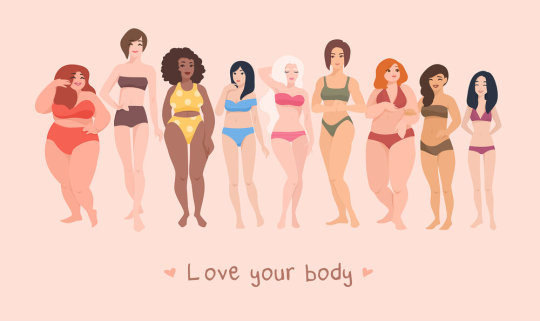
References for this week:
Anne Reif, Insa Miller & Monika Taddicken (2022): “Love the Skin You‘re In”: An Analysis of Women’s Self-Presentation and User Reactions to Selfies Using the Tumblr Hashtag #bodypositive, Mass Communication and Society, DOI: 10.1080/15205436.2022.2138442
Collins, L. (2022) How tumblr went from a $1 billion Yahoo Payday to a $3 million fire sale, CNBC. CNBC. Available at: https://www.cnbc.com/2022/09/15/how-tumblr-went-from-1-billion-yahoo-payday-to-3-million-fire-sale.html (Accessed: March 13, 2023).
Hendelmann, V. (2022) What happened to Tumblr? here's why the blogging platform failed, productmint. AN ELITE CAFEMEDIA FINANCE PUBLISHER. Available at: https://productmint.com/what-happened-to-tumblr/#:~:text=Tumblr%20is%20a%20microblogging%20and,between%20the%20platform%20and%20Yahoo. (Accessed: March 31, 2023).
Levy, G. (2022) 7 ways to feel more body positive, Zest Photography. Zest Photography. Available at: https://www.zestphotography.com.au/blog/7-ways-to-feel-more-body-positive (Accessed: March 13, 2023).
Milne, E 2023, ‘MDA 20009 Week Three Tumblr case study 2023 Slides.pptx’, MDA20009 Digital Communities, Learning materials via Canvas, Swinburne University of Technology, 13 March, viewed 13th March 2023.
What is a front end (in a website) - definition & development (2022) What is a Front End (In a Website) - Definition & Development. Available at: https://airfocus.com/glossary/what-is-a-front-end/#:~:text=Put%20simply%2C%20the%20front%20end,HTML%2C%20CSS%2C%20and%20JavaScript. (Accessed: March 31, 2023).
0 notes
Text
Introduction!
Hi! Before I start with my weekly summaries from my MDA20009 tutorials I will introduce myself. My name is Lily and I am a second year university student studying at Swinburne University of Technology. I hope you enjoy these posts :)

1 note
·
View note